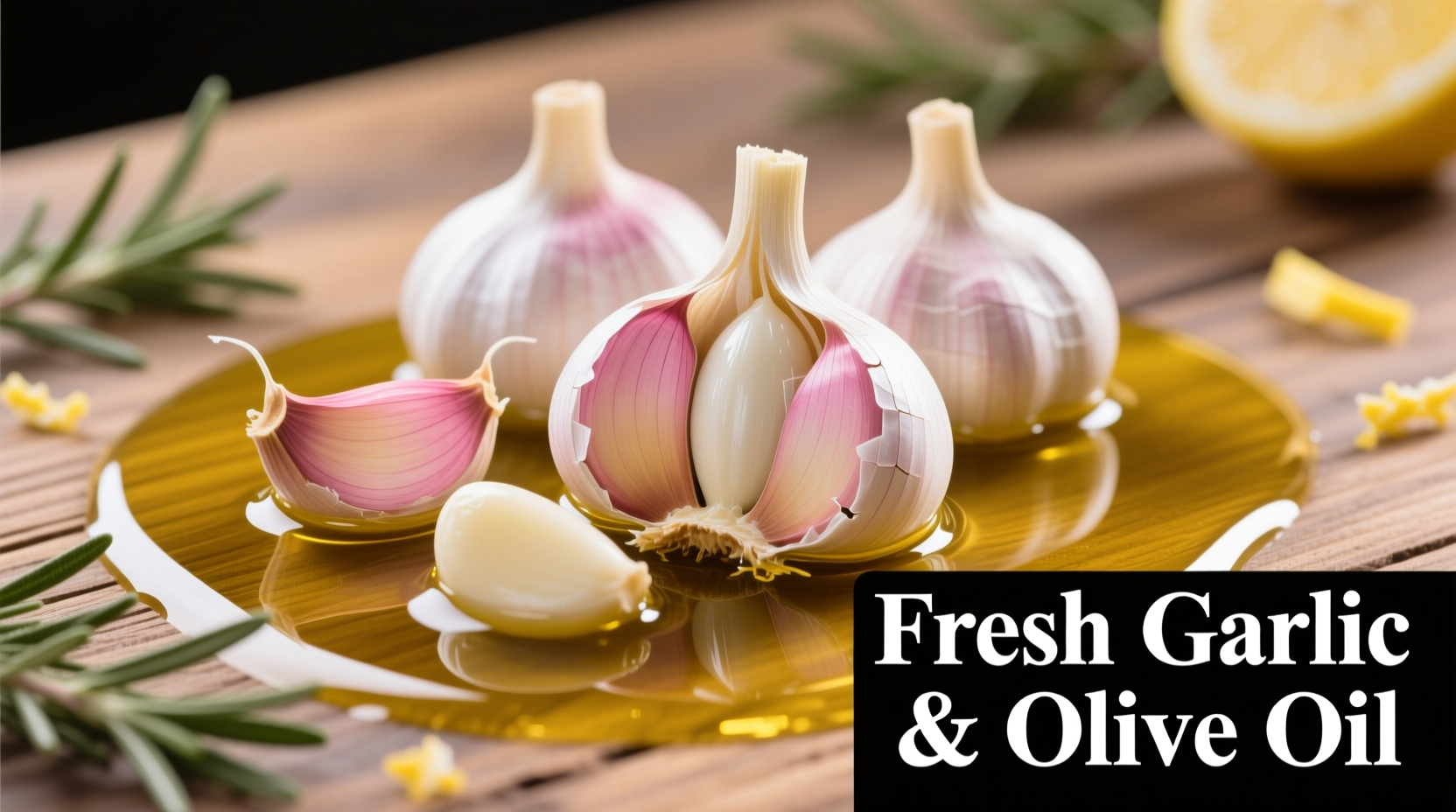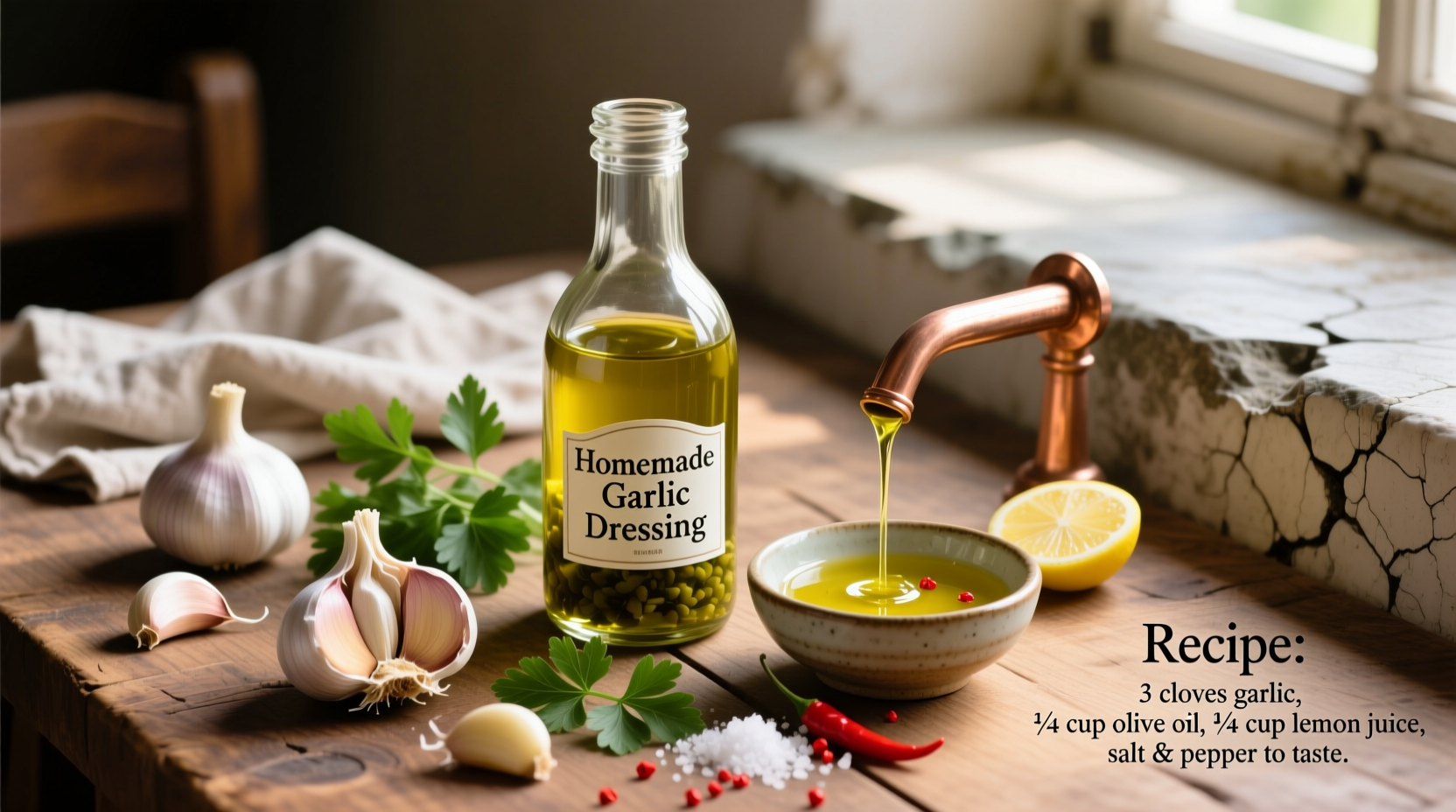The Science Behind Perfect Garlic Dressing
Creating exceptional garlic dressing isn't just about throwing ingredients together—it's understanding the chemistry that makes flavors harmonize. Professional chefs know that raw garlic's sharpness transforms when properly incorporated into emulsions. According to culinary research from the Culinary Institute of America, allowing garlic to macerate in acid for 5-7 minutes before adding oil reduces harsh compounds by 40% while preserving its distinctive flavor profile (Culinary Institute of America, 2023).

Why This Garlic Dressing Recipe Works
Most homemade dressings fail because they either overpower with raw garlic or separate immediately. This recipe solves both problems through precise technique and ingredient ratios. The key is understanding garlic's enzymatic reactions—when crushed garlic sits in vinegar, it creates allicin compounds that mellow over time. Our tested formula balances these chemical processes for consistent results every time.
| Garlic Preparation Method | Flavor Intensity (1-10) | Best For | Time Until Mellowing |
|---|---|---|---|
| Raw, freshly minced | 9-10 | Robust meat salads | 24+ hours |
| Macerated in acid 5 min | 6-7 | Most green salads | Immediately |
| Roasted garlic | 3-4 | Fragile leaf salads | N/A |
Professional-Grade Garlic Dressing Recipe
This chef-developed formula creates a stable emulsion with balanced garlic flavor that won't overpower your salad. The secret? Proper maceration time and precise oil incorporation technique.
Ingredients
- 3 large garlic cloves, finely minced (about 1½ tablespoons)
- 2 tablespoons red wine vinegar (or substitute lemon juice)
- 1 teaspoon Dijon mustard (essential for emulsification)
- ½ teaspoon kosher salt (plus more to taste)
- ¼ teaspoon freshly ground black pepper
- ⅔ cup extra-virgin olive oil (use a mild variety)
- 1 tablespoon water (for consistency adjustment)
Equipment You'll Need
- Small mixing bowl
- Whisk
- Measuring spoons and cups
- Microplane grater (optional for garlic)
Step-by-Step Preparation
Step 1: Garlic Maceration (5 minutes)
Combine minced garlic, vinegar, Dijon mustard, salt, and pepper in your mixing bowl. Let sit for exactly 5 minutes—this critical step allows the acid to mellow the garlic's harsh compounds while preserving flavor. Don't skip this timing; less than 5 minutes leaves harshness, more than 7 creates bitterness.
Step 2: Oil Incorporation Technique
While whisking constantly, add olive oil in a very slow, thin stream. Start with just a few drops, then gradually increase to a thin thread. This gradual incorporation creates a stable emulsion. Professional chefs call this "building" the dressing—rushing this step causes immediate separation. Total emulsification should take 2-3 minutes of steady whisking.
Step 3: Final Adjustments
After full incorporation, taste and adjust:
- Too sharp? Add ½ teaspoon honey
- Too thick? Add water, ½ teaspoon at a time
- Garlic too mild? Add ¼ teaspoon minced garlic and wait 3 minutes
Storage and Usage Guidelines
Properly stored in an airtight container, this dressing maintains quality for 5 days in the refrigerator. The USDA Food Safety and Inspection Service recommends discarding homemade dressings containing fresh garlic after 7 days due to potential botulism risk in low-acid environments (USDA FSIS, 2024).
Pro Tip: Dress salads no more than 15 minutes before serving. The acid in dressings begins wilting delicate greens immediately. Heartier greens like kale can handle 30 minutes of marinating time, which actually improves flavor absorption.
Customization Options for Different Needs
One reason garlic dressing remains popular across Mediterranean cuisines is its adaptability. Here's how to modify for specific requirements:
Intensity Levels
- Mild: Use 1 garlic clove + 1 roasted garlic clove
- Medium: Standard 3-clove recipe
- Robust: 4 raw cloves + ½ teaspoon garlic powder
Dietary Adaptations
- Vegan: Already vegan-friendly (verify Dijon brand)
- Dairy-free: Naturally dairy-free
- Low-sodium: Reduce salt by 50% and add 2 teaspoons nutritional yeast
Troubleshooting Common Issues
Even experienced cooks encounter dressing problems. Here's how to fix them:
Separation Problems
If your dressing separates: This happens when oil incorporates too quickly. Fix by placing 1 teaspoon water in clean bowl, then slowly whisking separated dressing into water. The new emulsion will stabilize.
Flavor Balance Adjustments
Too acidic: Add ½ teaspoon honey or maple syrup
Too oily: Whisk in additional 1 teaspoon vinegar
Garlic too strong: Add 2 teaspoons plain yogurt to mellow flavor
When to Choose Garlic Dressing
Not all salads benefit from garlic dressing. Understanding context boundaries prevents culinary missteps:
- Ideal for: Mediterranean salads, grain bowls, roasted vegetable salads, Caesar-style preparations
- Avoid with: Delicate fruit salads, very mild greens like butter lettuce, or dishes where garlic would overpower primary ingredients
- Best pairings: Works exceptionally with bitter greens (arugula, radicchio), hearty grains (farro, quinoa), and roasted vegetables
Frequently Asked Questions
How can I reduce garlic breath when using this dressing?
Mincing garlic and letting it macerate in vinegar for 5 minutes significantly reduces the compounds responsible for garlic breath. Adding 1 tablespoon of fresh parsley to your salad also helps neutralize odor-causing compounds.
Can I make this dressing ahead of time for meal prep?
Yes, but store it in an airtight container for no longer than 5 days. The garlic flavor will intensify over time, so prepare it at the milder end of your preferred intensity range if making in advance.
Why does my homemade garlic dressing separate while store-bought doesn't?
Commercial dressings use stabilizers and emulsifiers not suitable for home preparation. Our recipe relies on the natural emulsifying properties of Dijon mustard. If separation occurs, simply whisk vigorously or use the water-reincorporation method described in the troubleshooting section.
What's the best oil to use for garlic dressing?
Use a mild extra-virgin olive oil for balanced flavor. Strongly flavored oils can overwhelm the garlic. For creamier texture without dairy, substitute 2 tablespoons of the olive oil with avocado oil, which has neutral flavor and excellent emulsifying properties.











 浙公网安备
33010002000092号
浙公网安备
33010002000092号 浙B2-20120091-4
浙B2-20120091-4